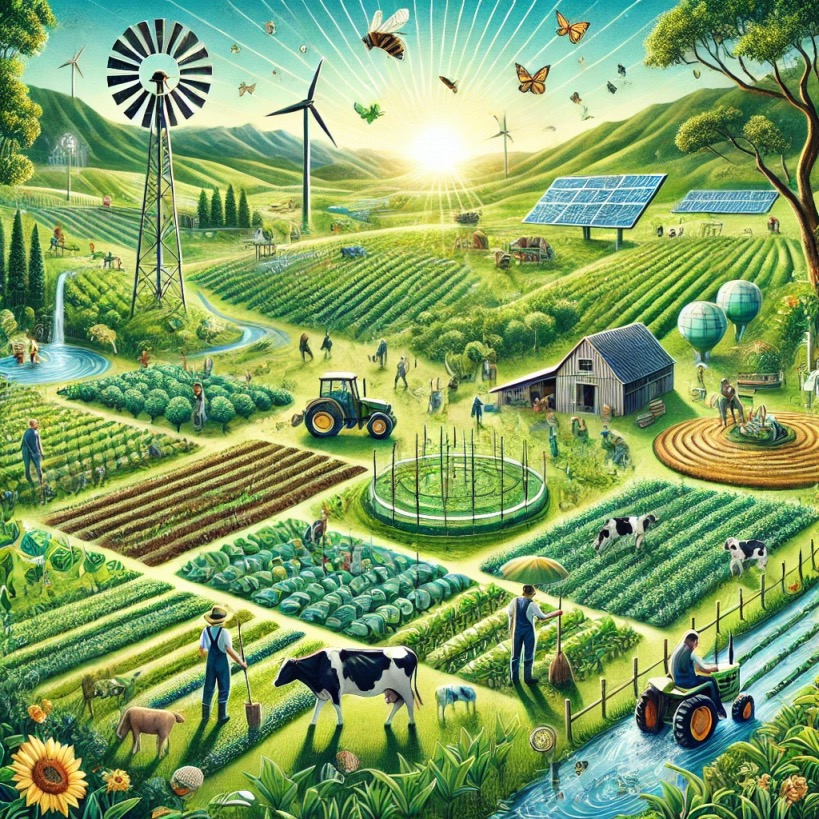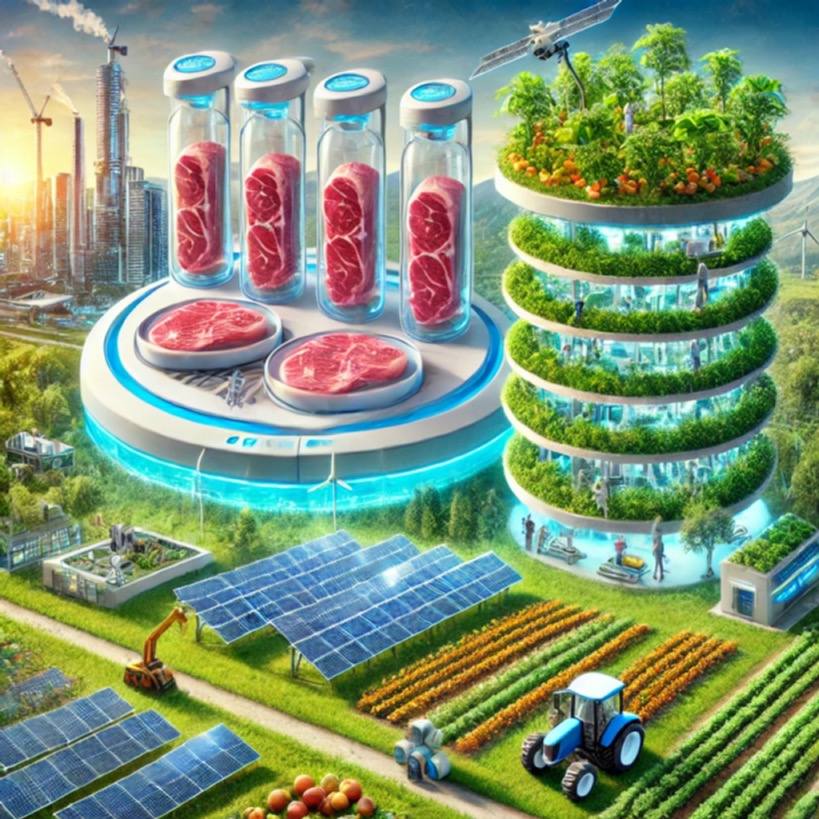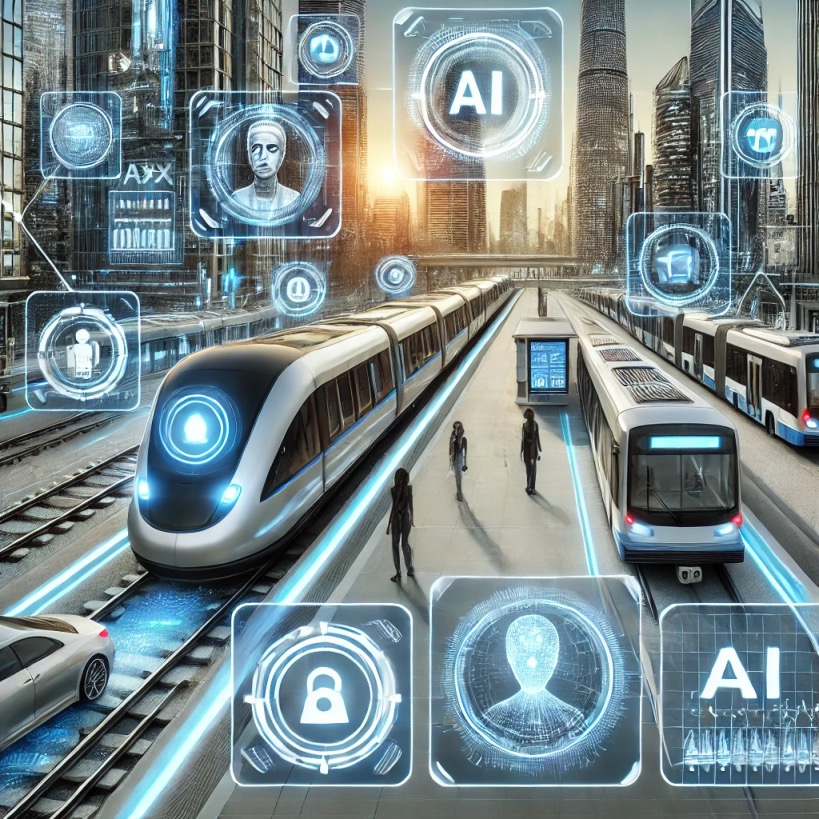Yes, cultured meat and vertical farming are not only possible but are already being actively developed and implemented in various parts of the world. Both technologies represent innovative solutions to some of the most pressing challenges in food production, including environmental sustainability, resource scarcity, and population growth.
Let’s break down each concept:


1. Cultured Meat (Lab-Grown Meat):
Cultured meat, also known as cell-based meat , is real meat grown from animal cells in a lab without raising or slaughtering animals. It involves taking a small sample of animal cells (usually muscle or fat cells) and cultivating them in a nutrient-rich environment until they grow into edible tissue.
Is it possible?
- Yes, cultured meat is scientifically feasible and has already been produced in labs. The first lab-grown burger was unveiled in 2013 by Dr. Mark Post at Maastricht University.
- Companies like Eat Just , Aleph Farms , and Upside Foods have made significant progress in scaling up production and gaining regulatory approval for commercial sale.
- In December 2020, Singapore became the first country to approve the sale of cultured chicken meat from Eat Just.
Challenges:
- Cost : Early versions were extremely expensive (the 2013 burger cost $330,000), but costs have dropped significantly with advancements in technology.
- Scalability : Producing cultured meat at scale remains a challenge, but companies are working on optimizing bioreactors and reducing production costs.
- Regulation : Approval processes vary by country, and widespread adoption will require more regulatory frameworks.
- Consumer Acceptance : Some people may be hesitant to try lab-grown meat due to unfamiliarity or cultural preferences.
Potential Benefits:
- Reduces greenhouse gas emissions associated with livestock farming.
- Eliminates the need for animal slaughter, addressing ethical concerns.
- Uses significantly less land and water compared to traditional livestock farming.
2. Vertical Farming:
Vertical farming involves growing crops in stacked layers, often indoors, using controlled-environment agriculture (CEA) techniques such as hydroponics, aeroponics, or aquaponics. This method allows for year-round crop production in urban areas, independent of weather conditions.
Is it possible?
- Yes, vertical farming is already a reality and is being used commercially in many countries. Companies like Plenty , AeroFarms , and Infarm are leading the way in developing large-scale vertical farms.
- Vertical farms are particularly popular in urban areas where space is limited, such as New York, Tokyo, and Dubai.
Challenges:
- Energy Use : Vertical farms rely heavily on artificial lighting and climate control, which can be energy-intensive. However, renewable energy sources and LED efficiency improvements are helping mitigate this issue.
- Initial Costs : Setting up a vertical farm requires significant upfront investment in infrastructure and technology.
- Crop Limitations : Currently, vertical farming is best suited for leafy greens, herbs, and certain vegetables. Staple crops like wheat, rice, and corn are harder to grow profitably in vertical systems.
Potential Benefits:
- Reduces the need for arable land, preserving ecosystems and biodiversity.
- Minimizes water usage (up to 95% less than traditional farming).
- Enables local food production, reducing transportation emissions and ensuring fresher produce.
- Provides consistent yields regardless of external weather conditions.
Are They Sustainable Solutions for the Future?
Both cultured meat and vertical farming hold immense promise for creating a more sustainable and resilient food system. While they face challenges, ongoing technological advancements and increasing investment suggest that these innovations will play a key role in addressing global food security and environmental concerns.
Key Takeaways:
- Cultured meat can reduce the environmental impact of livestock farming while meeting the growing demand for protein.
- Vertical farming can bring agriculture closer to urban centers, reduce resource use, and ensure year-round food production.
- Together, these technologies could help feed a growing global population while minimizing the strain on natural resources.
In conclusion, both are not only possible but are actively being developed and refined. With continued innovation, they have the potential to transform the way we produce and consume food in the future.



